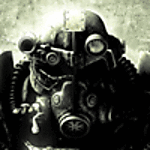
Well into this one now, just about to primer stage. So i can give a pretty good indication as to things to watch out for if you want to build this one.
One of the first things i did was clean up all the resin and assemble the cowling halves...often resin engines simply don't fit inside because they are scaled to the correct size of the original and don't take into acount the thickness of the plastic cowls. But this one fitted perfect.

The cockpit is fidly, but i think represents the steel tube structure very well. One thing about the plastic SH use, it is very soft and flexible which sometimes has benefits and sometimes is a hindrance.
The cockpit assemble fitted perfectly inside the fuselage sides. But a test fit of the canopy later found that the roll over framing was WAY too high. So i had to pull that off trim about 3mm from each leg and re-fit.


One area i was a bit scared of was the forward wing to fuselage join. It was a combination join of the interior cockpit floor, lower wing and fuselage halves. All this in a limited run kit didn't sound good. However it wasn't as bad as expected...the soft flexible plastic sort of helps a bit when adjusting this area. It wasn't filler free, but not too bad either.

The area that test fitting did show a problem was the top wing to body join. If done the usual way, joining all the wing halves and then fitting to the fuselage, it seemed that a step and gap would result along the critical upper wing to body join. And we all know that is a very hard place to fill and blend, especially with a step involved. So i did it this way: First i joined the lower wing to fuselage to get that earlier mentioned lower front wing join acceptable. Then i superglued the top wings only along the upper wing to body join, leaving the rest of the top wings loose for now. Then i taped and glued the remainder of the wing tops using liquid cement. This made a filler less join along the top wing to fuselage join.
It did mean that some filler was needed at the leading edges of the wing roots, but i felt that was far easier to fix than a step all along the wing to fuselage join.
In the pic you can also see that i used some sprue to spread the upper forward fuselage sides slightly, as they tended to pinch in at the top.


The landing lights didn't fit well. I expected that...well it's common even with regular high production kits, so it has to be expected for limited run kits for sure. I coated the clear landing light covers in Tamiya Clear X-13 to prevent fogging and super glued them. Then filed and sanded and finished with micromesh. It only took 15 minutes all up.

Normally i paint the cowl seperately and fit it later for radial engined subjects. But in this case it cannot be done because the lower air scoop is fitted to both the lower fuselage and the cowl. And test fitting showed it would need some filler, so it couldn't be fitted after painting.

This kit is the most enjoyable i've started this year so far. The latest SH and Classic Airframes kits set the standard in my opinion for surface detailing. And they are not too difficult to build with a bit of test fitting and some minor brain usage to solve small fit issues all that is needed.
Andrew






































